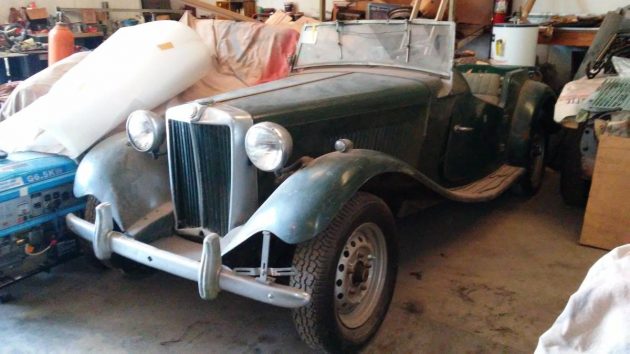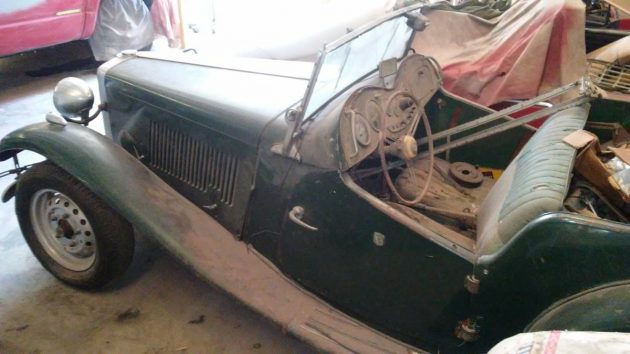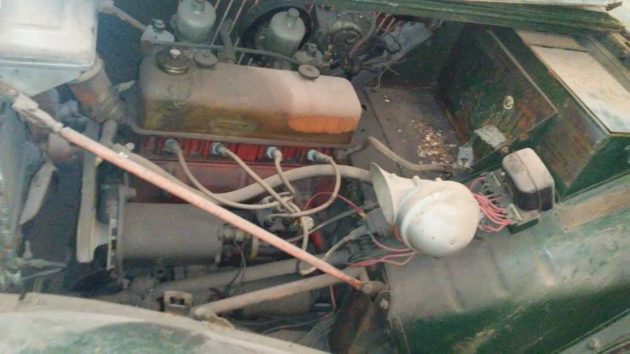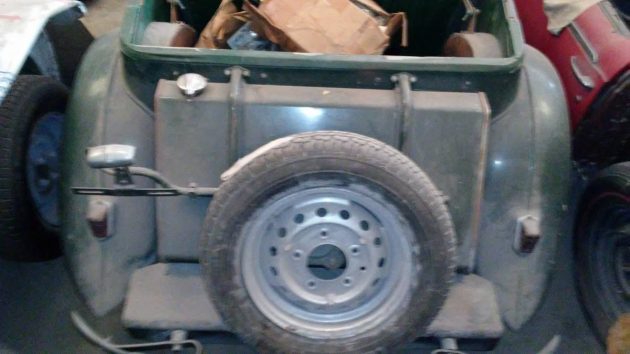Certain cars are considered milestones in automotive history. Nearly all cars produced are designed solely for transportation from point A to point B. However, some cars are more than just transportation. The Milestone Car Society (the organization has since folded) created a list of cars produced from 1945 through 1972 that are significant because of their styling, performance, engineering, innovation, and/or craftsmanship. One of the cars on that list is the MGTD, and the reasons are likely both those listed above and the incredible effect it had on American drivers who wanted something more than transportation. MGTDs were the first sports cars to see widespread use in America and, while they were not that great of a sports car to begin with, they set the trend on what one should be. The 1952 MGTD seen above, which is for sale on Craigslist for $7500, is a fairly rough but solid example of the breed. Located in Whiteville, North Carolina, this MG represents a chance for an enthusiast to get into a good TD and come out of a restoration in fairly good shape financially.
To give credit where credit is due, there were sports cars in America before the MGTD. The Stutz Bearcat, and Duesenbergs with two seat custom bodies, such as the two SSJs, can lay claim to being pre-war American sports cars. After the war, the best American examples were the 1949-1952 Crosley Hot Shot and the 1950-1952 Super Sports. MG had also produced and exported the MGTC after the war ended. While the Crosley turned out to be a good racing car, it wasn’t really a sales success. The MGTC slowly gained popularity after the war despite its right hand drive, but it never sold in large numbers here. The TC’s successor, the MGTD, managed to sell in numbers that made other manufacturers take notice. It had a lot of the right features, such as a steering wheel on the left side of the cockpit, a lower center of gravity, enough horsepower to get out of its own way, and an independent front suspension. Americans bought 23,488 of these little marvels, and the sports car became a part of American life.
This example, while obviously not in show condition, appears to be solid enough to be brought back to life with the standard gas tank flush, tires, carb rebuild, and check of vital components. These are not very sophisticated cars, so someone with rudimentary mechanical skills would likely be able to work on it. The owner claims that it is rust free, but I think he means that the car is free from major rust damage. It does appear that the car was stored indoors for a long period of time, which is an answer to a restorer’s prayers. Surface rust is shown in the areas where the paint has chipped off, and on the frame rails, but not to the extent that it would be a problem. All the parts and pieces seem to be there, except for the cloth top and the side curtains, but those would likely need replacement anyway after all of these years.
Under the hood sits a MGTF crate engine. The story is that the car was a 1953 model, which was the last year of production for the MGTD. The next model, the MGTF, had a stronger engine. The previous owner went to the trouble of ordering a TF spec engine and having it installed at the dealership. While this likely doesn’t help with the value of the car, as the original engine is not around to go with the car, the new owner will be pleased if the car ends up as a driver. The 250 cc increase in engine displacement to 1.5 liters should make driving in modern traffic more enjoyable.
If you look past the highly sophisticated restoration attempt on the spare wheel, you will see that the body work is solid on this car. Multiple pictures are provided of the underside of the car, but they are blurry or are too bright from the flash to make any serious analysis. You can see that everything appears solid, and this is backed up by the condition of the body. One thing we cannot see is the condition of the wood in the body. These cars had wooden floors, and the body panels are mounted over a wooden framework. In a car that has been stored indoors, rot and bugs are usually not a problem. However, replacing the woodwork in the body would be a major pain to the point that it would be prudent to walk away. I doubt that is the case here, but it is always a good idea to inspect the car before laying out any cash.
If I purchased this car, I would get it back on the road and drive it while building up the parts and materials necessary to do a frame off restoration on it. These cars seem to be undervalued in the market, and this one is a steal for someone who knows how to restore a car and has the equipment already to complete it. While the performance is nothing like today’s sports cars, it would be neat to step back in time and drive one of these milestone cars on a winding road. We have all seen cars from the thirties to the fifties, and anyone who has driven one from that time can tell you that most of these cars and spirited driving just don’t mix. What a breath of fresh air an MGTD would have been to someone who loved driving back then.





in the early 1970’s i was in my home town on Northeast Ohio in January. On a bulletin board I saw a handwritten note listing a TD for a few hundred dollars. I bought it and hauled it 2 plus hours home on a rented trailer with my wife’s 1967 Barracuda.
The word went out and my friends in the business offered me new and used parts. One of the local MG dealers gave me every new part they had for a TD including a new radiator shell and a new red interior. They said they were taking up space. The dealership owner asked me to pay $35 for a used rear axle. I did so gladly.
Spring came and I sold the entire package. I had plenty of other projects.
It’s so true! These are a last to drive
Back in the day – late 60’s-early 70’s – a common upgrade was to replace the MG engine/trans with a Volvo B18 & the trans from a Volvo P1800. Double the power, about the same weight, and significantly better longevity. ( The Guinness
World record for miles on a passenger car with the original engine is held by Irv Gordon’s Volvo P1800 – over 3 million miles, ( 3,173,895 as of Sept, 2016 ). The engine has been overhauled twice. 885 oil changes (every 3500 miles ). The car was exhibited at the AAPEX / SEMA show a couple of years ago, and it looks like a sub 100 thousand mile garage kept car.
This one is worth saving but this is a lot of money for a car at this level. A year ago I sold a strong #3 car for $15K, I’ll bet you couldn’t build this one to that level for that money.
sis got 1 (yr?) for college grad in late 60s.
near end of ownership the plywood fls & every nut rechromed – mid westerner came w/trailer’n carted it off. (3 different carb set-ups, 2 rear ends; it was more than complete).
I guess that the TF engine would go a long way towards upping the top speed. During our club driving tours we have to accommodate our TD owners who really don’t want to exceed 55 or 60 mph in their 65 year old cars. We try to stay away from interstates as much as possible.
An interesting side note is that MG didn’t see the need for a gas gauge as these got pretty decent mileage and long trips are somewhat punishing on the driver and passenger and not really something you did in the England of the fifties anyway.. A graduated wooden stick was provided to measure the amount of petrol in the externally mounted tank.